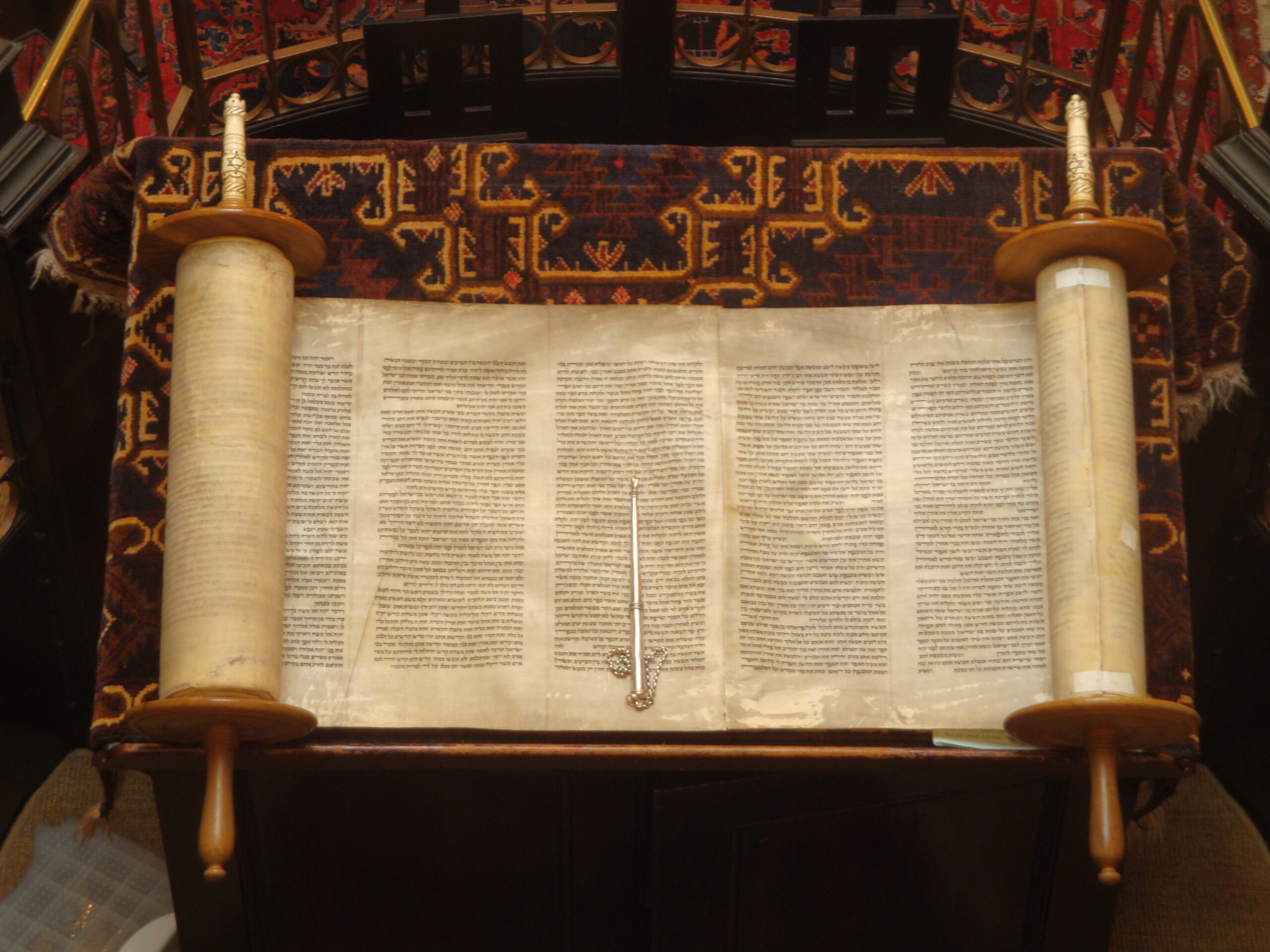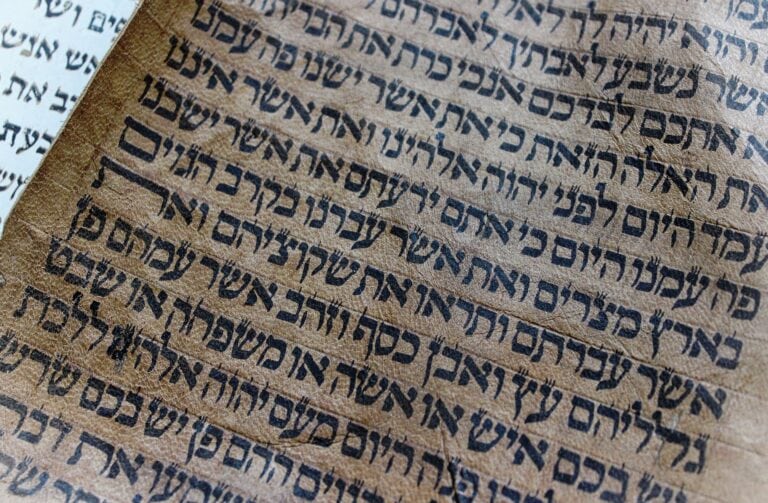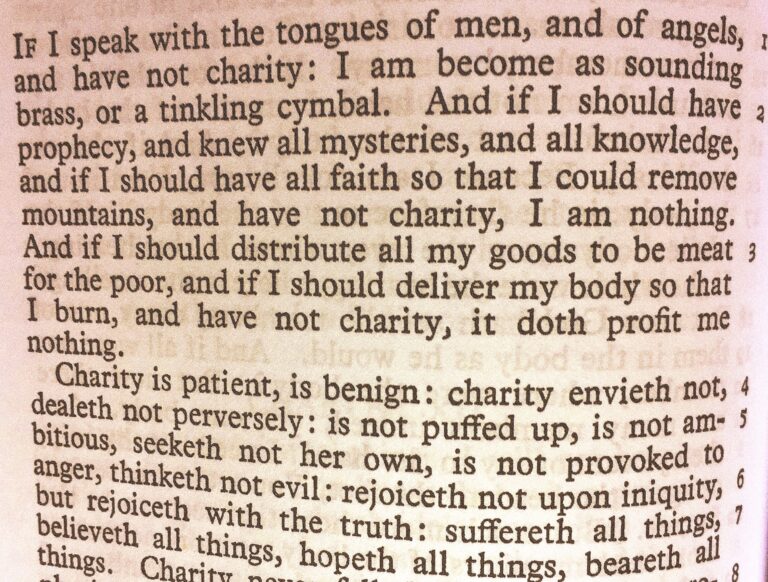What are the First Five Books of the Bible, their authorship, date and major events?
The Catholic Church safeguards the complete collection of Sacred Scripture – seventy-three divinely inspired books that have remained unchanged since their formal approval at the Council of Rome in 382 AD. Let us explore the first Five Books – Genesis, Exodus, Leviticus, Numbers and Deuteronomy.

The Catholic Bible stands unique in its composition, containing forty-six books in the Old Testament and twenty-seven in the New Testament. The Lord, in His wisdom, has blessed us with seven deuterocanonical books – Tobit, Judith, 1 and 2 Maccabees, Wisdom, Sirach, and Baruch. These sacred texts, while absent from the Protestant sixty-six book collection, provide profound spiritual insights into God’s revelation.
I highly recommend approaching these texts with reverence, whether you seek deeper scriptural knowledge or wish to understand the historical foundations of our faith.
Let us begin our journey through these sacred writings, always mindful that they contain the inspired Word of God, handed down through the ages by Holy Mother Church.
What about the Book of Genesis?
The Book of Genesis reveals the divine foundation of our Catholic faith, illuminating humanity’s first encounters with God. Through divine inspiration, Moses authored this sacred text between the 15th and 13th centuries BC [8]. Let us consider how the Holy Spirit guided Moses to craft this narrative despite not witnessing these events firsthand [8].
What prompted Moses to write this profound account?
The Lord called Moses to compose Genesis during a crucial period when the Israelites yearned for spiritual guidance and deeper understanding of their covenant relationship with God [8]. The text shows evidence of later sacred additions known as post-Mosaica, such as references to the city of Dan and the Chaldeans [7].
What are the Genesis Key Events?
The Holy Spirit organizes Genesis through two magnificent sections: the primeval history (chapters 1-11) and the ancestral history (chapters 12-50) [7]. Let us examine these pivotal moments that shaped salvation history:
Creation and Fall: The Almighty creates the universe in six days, forms Adam and Eve, and establishes the Garden of Eden [7]
The Great Flood: Through Noah, God preserves creation and establishes His covenant [9]
Tower of Babel: The Lord diversifies human languages, scattering people across the earth [9]
Abraham’s Journey: The divine call leads Abraham from Ur, with promises of descendants and land [10]
Patriarchal Stories: Through Isaac, Jacob, and Joseph, God shapes Israel’s destiny [8]
What are the major themes of Genesis?
This shows the profound theological depth of Genesis through interconnected divine truths. Above all, it establishes the Almighty as the sole creator, bringing order from chaos through His word alone [8]. A great insight reveals mankind’s unique dignity, created in God’s image – not physically, but in our capacity to know and love the Divine [7].
The theme of covenant relationships illuminates God’s faithfulness. This is evident as the Lord establishes successive covenants: first with all humanity through Noah, then specifically with Abraham and his descendants [7]. These sacred bonds demonstrate God’s unwavering fidelity despite human weakness.
What consequences flow from human free will?
The Fall narrative reveals humanity’s capacity to choose between good and evil [7]. This choice echoes through all subsequent human history, introducing death and suffering into God’s creation [7].
I highly recommend contemplating God’s plan for redemption in Genesis. Even after the Fall, our Heavenly Father promises salvation [10]. This thread of divine mercy continues through Abraham’s lineage, establishing Israel’s role in salvation history [10].
The Holy Spirit structures Genesis through the recurring phrase “elleh toledot” (these are the generations), appearing twelve times to organize the sacred narrative [7]. Through this divine arrangement, Genesis presents not merely historical accounts but profound revelations about God, humanity, and their eternal relationship [11].
What about the Book of Exodus?
The sacred Book of Exodus reveals God’s mighty hand leading the Israelites from bondage to freedom. This divine narrative establishes the chosen people’s identity through their covenant with the Almighty. Let us examine how this second book of Sacred Scripture illuminates God’s faithfulness to His people [7].
Who is the author of Exodus Author and its’ Date?
The Holy Spirit guided Moses in authoring this sacred text, though later divine inspiration led to certain revisions for subsequent generations [8]. The events unfold between the 16th and 13th centuries BC, with many scholars pointing to 1446 BC as the pivotal year [8]. This dating flows from counting 480 years before Solomon’s fourth regnal year [8].
What are the key events of Exodus?
What magnificent acts of God shaped Israel’s identity as His chosen people?
Let us contemplate these defining moments:
The Oppression and Moses’s Call: The Lord breaks His silence, responding to Israel’s suffering by calling Moses through the burning bush [7]
The Ten Plagues and Passover: Through Moses, God demonstrates His power over false Egyptian deities, instituting the sacred Passover feast [7]
The Exodus and Red Sea Crossing: The Almighty parts the waters, leading His people to freedom and nationhood [7]
The Sinai Covenant: Upon the holy mountain, God bestows His Law, forming the foundation of religious and moral life [9]
The Tabernacle Construction: Following divine wisdom, the Israelites create a dwelling place for God’s presence [10]
What are the major Exodus Themes?
This sacred text reveals profound theological truths through interconnected themes. Above all, we witness God’s unwavering faithfulness to His covenant promises made to Abraham [8]. Through supernatural interventions, the Lord reveals Himself as the one true God [7].
I would draw your attention to the theme of divine presence, manifested gloriously in the pillar of cloud and fire [11]. This presence finds its permanent dwelling in the tabernacle, showing God’s desire to remain among His people [10].
The formation of Israel’s covenant identity emerges through the giving of the Law. The Ten Commandments and sacred regulations establish the framework for holy living [9]. Through this divine covenant, the Lord transforms scattered tribes into “a kingdom of priests, a holy nation” [10].
This shows how liberation transcends mere physical freedom. The Israelites receive not only freedom from bondage but a divine purpose [7]. The Red Sea crossing prefigures the holy sacrament of Baptism, revealing God’s plan of spiritual transformation [7].
The Holy Spirit structures this book in two magnificent sections: the liberation from Egypt (chapters 1-18) and the Sinai covenant (chapters 19-40) [10]. This divine arrangement teaches us that true freedom leads to loving commitment to God’s purposes [10].
What about the Book of Leviticus?
Let us contemplate the third book of Sacred Scripture, Leviticus, which reveals divine wisdom for worship and holiness. Through this sacred manual, the Lord instructs His people in priestly duties and sacrificial rituals, bridging the divine narrative between the Exodus and Israel’s wilderness journey.
Who authored the Book of Leviticus and its’ Date?
The Holy Spirit guided Moses in recording these sacred instructions, with more than fifty direct references to divine communication through him [12]. I would note that this holy text was composed around 1450 BC, as the Israelites encamped at Mount Sinai. This shows how the Lord delivered these detailed laws following the Ten Commandments [2].
What are the key Leviticus Events?
What sacred rituals did the Lord establish for His people? Let us examine the five divinely ordained sacrifices:
Burnt Offering (Holocaust): A complete offering symbolizing total dedication to God
Grain Offering: The fruits of human labor presented before the Lord
Peace Offering: Sacred expression of thanksgiving and fellowship
Sin Offering: Divine provision for atonement of unintentional sins
Guilt Offering: The Lord’s mercy for specific transgressions [1]
A profound moment unfolds in chapter 8, where Moses consecrates Aaron and his sons to the priesthood [2]. Much solemnity surrounds this event, particularly when Nadab and Abihu perish after offering unauthorized incense before the Most High [2].
The establishment of the Day of Atonement (Yom Kippur) reveals God’s provision for His people’s purification. On this most sacred day, the high priest enters the Holy of Holies, sprinkling sacrificial blood upon the Ark of the Covenant [2].
What are the major themes in Leviticus?
The divine attribute of holiness illuminates this sacred text. Through detailed prescriptions, the Lord reveals His absolute holiness and our need for purification [13]. I highly recommend contemplating the divine command that echoes throughout: “You shall be holy, for I the Lord your God am holy” [2].
What purpose serves the sacrificial system beyond mere ritual?
This shows God’s provision for maintaining relationship through worship, enabling repentance and renewal [4]. The blood sacrifices particularly manifest the gravity of sin and humanity’s need for atonement [1].
The establishment of the priesthood reveals another sacred truth. The Levites, chosen after the golden calf incident, receive divine instruction for their holy duties [1]. Their sacred role extends beyond rituals to teaching God’s people about holiness and maintaining sanctuary sanctity.
The concept of ritual purity pervades these divine instructions, with detailed regulations for food, childbirth, diseases, and bodily conditions [2]. The Lord provides these laws for both practical and spiritual purposes, fostering physical and spiritual cleanliness among His people.
The Holiness Code, chapters 17-26, presents the Lord’s guidance for daily life [14]. This divine wisdom extends beyond ritual matters to ethical and economic concerns, addressing sexual practices, treatment of others, and land management [14].
A great insight reveals how the perpetual altar fire symbolizes God’s constant presence and eternal covenant [12]. The prohibition of blood consumption likewise shows the sanctity of life, as blood contains the creature’s life force [2].
What about the Book of Numbers?
Let us contemplate the fourth book of Sacred Scripture, Numbers, which chronicles the Lord’s guidance of Israel from Mount Sinai to the plains of Moab over forty years [5]. This holy text, named for its two divine censuses, marks the beginning and end of Israel’s wilderness journey.
Who authored the Book of Numbers and its’ Date?
The Holy Spirit guided Moses in composing this sacred text between 1440 and 1400 BC [3]. I would note that these divine revelations primarily focus on two crucial periods: the second year after the Exodus and the final year of desert wandering [5]. While initially written at Mount Sinai, the text received sacred refinements during the early Persian period, near the 5th century BC [5].
What are the key Numbers Events?
How did the Lord guide His people through the wilderness?
The divine narrative unfolds across three sacred locations [5]:
Mount Sinai Phase: The Almighty provides instructions, orders the first census, and prepares His people
Kadesh-Barnea Period: Twelve chosen men explore Canaan, leading to the people’s fateful rejection
Plains of Moab Era: A new generation rises, prepared by God for conquest
What consequences followed Israel’s disobedience?
The Lord’s justice decreed that the first generation would perish in the wilderness, reserving the Promised Land for their children [5]. Through various divine judgments, approximately 15,000 people perished in their rebellion against Moses [5].
What are the major Numbers Themes?
This shows the profound theological richness through interconnected divine truths. Above all, the text reveals the sacred relationship between God and His people, maintained through holy covenants [5]. The Lord’s presence, manifested in the overshadowing cloud, demonstrates His unwavering faithfulness [5].
I highly recommend contemplating how holiness permeates these sacred pages. Rather than mere rules, these divine instructions forge Israel’s identity as God’s chosen people [5]. This spiritual formation proves essential to understanding God’s purpose.
The divine censuses carry profound meaning beyond mere numbers. The count of fighting men (exceeding 600,000) testifies to God’s fulfilled promise to Abraham of countless descendants [5]. The arrangement of tribes around God’s Sanctuary reveals their sacred relationship with His dwelling [5].
A great insight emerges in the contrast between divine righteousness and human rebellion. Yet the Lord’s mercy prevails, providing hope for the new generation [5]. The two censuses reveal not only different generational responses but God’s enduring faithfulness despite human weakness [5].
The theme of promised land illuminates the final chapters. The Lord provides detailed instructions for:
Extermination of the Canaanites
Demarcation of boundaries
Division of territory
Establishment of Levitical cities
Regulations for inheritance [5]
The Holy Spirit structures this narrative around two generations: those who died in the wilderness and those chosen to enter Canaan [5]. This divine arrangement teaches the profound distinction between disobedience and faithfulness, transcending mere historical record [5].
What about the Book of Deuteronomy?
The sacred Book of Deuteronomy presents Moses’s final addresses to the Israelites on the plains of Moab. Let us contemplate this divine text that both recapitulates God’s law and provides profound reflection on Israel’s covenant relationship with the Almighty.
Who authored the Book of Deuteronomy and its’ Date?
According to sacred tradition, Moses authored this holy text, as evidenced by numerous internal references to him as both preacher [15] and writer [16]. The Holy Spirit guided Moses to compose these words around 1406 BC, capturing his farewell speeches during the 40 days before Israel entered the Promised Land [17].
Much is unknown about the text’s final form. Some scholars suggest completion between the 7th and 5th centuries BC [15], connecting it to King Josiah’s religious reforms and the discovery of “the book of the law” in the Jerusalem Temple near 622 BC [6].
What are the key Deuteronomy Events?
As we read in the Scriptures, the divine narrative unfolds through three magnificent discourses by Moses [15]:
First Discourse (Chapters 1-4): The Lord’s guidance through forty years, culminating in calls for divine obedience
Second Discourse (Chapters 5-28): The Holy Commandments renewed, with sacred laws for God’s people
Third Discourse (Chapters 29-30): Divine mercy offering restoration through repentance
What profound wisdom fills the final chapters (31-34)?
Here we find the Song of Moses, his Holy Blessing, and the sacred account of his death on Mount Nebo [15]. This shows the divine transition of leadership to Joshua, preparing God’s people for the Promised Land [18].
What are the major Deuteronomy Themes?
I highly recommend contemplating the three fundamental elements that illuminate this text: Israel, the Lord God, and their sacred covenant [15]. Above all other Old Testament books, Deuteronomy uniquely emphasizes God’s profound love for His people [19].
The Shema (Deuteronomy 6:4-9) reveals these central divine truths [19]:
Hear, O Israel, the Lord our God is one Lord.
Thou shalt love the Lord thy God with thy whole heart, and with thy whole soul, and with thy whole strength.
And these words which I command thee this day, shall be in thy heart:
And thou shalt tell them to thy children, and thou shalt meditate upon them sitting in thy house, and walking on thy journey, sleeping and rising.
And thou shalt bind them as a sign on thy hand, and they shall be and shall move between thy eyes.
And thou shalt write them in the entry, and on the doors of thy house.The Holy Bible, Translated from the Latin Vulgate (Bellingham, WA: Logos Bible Software, 2009), Deuteronomy 6:4–9.
Monotheism: The Lord alone is God
Total devotion: Our complete love belongs to Him
Practical application: Living His law daily
A great insight shows how covenant renewal extends beyond one generation to all God’s future people [20]. This sacred relationship demands faithful obedience, promising divine blessings while warning of consequences for disobedience [17].
The Lord commands His people to remember – their liberation from slavery, His saving acts, their desert journey [21]. This holy remembrance shapes their identity and inspires faithful observance of divine commands.
The Almighty’s concern for social justice emerges through provisions for:
Protecting the vulnerable
Just treatment of workers
Care for the poor
Ethical commerce [21]
While reflecting ancient treaty patterns, this divine text uniquely emphasizes God’s commitment to Israel [21]. Through this sacred framework, Deuteronomy establishes the foundation of Israel’s identity, profoundly influencing both prophetic writings and the New Testament [22].
Sacred Books of the Pentateuch: A Divine Overview
Let us examine how the Holy Spirit guided the composition of these sacred texts through Moses. This table presents the divine wisdom contained in each book:
Sacred Book | Divinely Inspired Author | Period of Composition | Sacred Events | Divine Themes |
|---|---|---|---|---|
|
Genesis |
Moses |
15th-13th centuries BC | – Creation and the Fall of Man | – The Lord as Divine Creator |
|
Exodus |
Moses |
16th-13th centuries BC (c. 1446 BC) | – The Lord calls Moses | – God’s eternal faithfulness |
|
Leviticus |
Moses |
1450 BC | – Institution of Sacred Sacrifices | – Divine holiness |
|
Numbers |
Moses |
1440-1400 BC | – First Holy Census | – God’s relationship with His people |
|
Deuteronomy |
Moses |
c. 1406 BC | – First Sacred Discourse | – Divine love for His people |
This divine arrangement shows how the Lord guided His people through these sacred books. I highly recommend contemplating how each text builds upon the others, revealing God’s progressive revelation to His chosen people.
FAQs
Q1. How many books are in the Catholic Bible and when were they officially recognized? The Catholic Bible contains 73 books, which were officially recognized as canonical at the Council of Rome in 382 AD under Pope Damasus I. This includes 46 books in the Old Testament and 27 in the New Testament.
Q2. What are the first five books of the Catholic Bible and who wrote them? The first five books of the Catholic Bible, known as the Pentateuch, are Genesis, Exodus, Leviticus, Numbers, and Deuteronomy. Traditionally, these books are attributed to Moses, although modern scholarship suggests they may have undergone later revisions and updates.
Q3. What are some key events in the Book of Genesis? Genesis includes several pivotal events such as the Creation and Fall of humanity, Noah’s Flood, the Tower of Babel, Abraham’s journey, and the stories of the patriarchs Isaac, Jacob, and Joseph. These events lay the foundation for God’s relationship with humanity and the formation of the Israelite nation.
Q4. What is the significance of the Book of Exodus in Catholic tradition? Exodus is crucial in Catholic tradition as it narrates the liberation of the Israelites from Egyptian bondage, the establishment of the Sinai Covenant, and the giving of the Ten Commandments. It emphasizes God’s faithfulness to His promises and the formation of Israel’s identity as God’s chosen people.
Q5. What are the major themes in the Book of Deuteronomy? Deuteronomy emphasizes several key themes including divine love, covenant renewal, remembrance of God’s acts, social justice, and monotheism. It serves as both a recapitulation of divine law and a profound theological reflection on Israel’s covenant relationship with God, influencing both the prophetic writings and the New Testament.
References
[1] – https://www.churchofjesuschrist.org/study/manual/old-testament-seminary-teacher-manual/introduction-to-the-book-of-genesis?lang=eng
[2] – https://en.wikipedia.org/wiki/Book_of_Genesis
[3] – https://zondervanacademic.com/blog/who-wrote-genesis
[4] – https://www.vatican.va/archive/bible/genesis/documents/bible_genesis_en.html
[5] – https://discover.hubpages.com/religion-philosophy/The-Main-Events-in-the-Book-of-Genesis
[6] – https://www.catholic.com/magazine/print-edition/genesis
[7] – https://bible.usccb.org/bible/genesis/1
[8] – https://www.catholic.org/bible/adam_eve.php
[9] – https://bible.usccb.org/bible/genesis/0
[10] – https://www.catholic.com/magazine/print-edition/exodus
[11] – https://www.esv.org/resources/esv-global-study-bible/introduction-to-exodus/
[12] – https://en.wikipedia.org/wiki/Ten_Commandments
[13] – https://www.catholicnewsagency.com/resource/56262/exodus
[14] – https://www.thebiblejourney.org/biblejourney2/25-the-israelites-journey-from-egypt-to-mt-sinai/moses-receives-the-ten-commandments/
[15] – https://www.ewtn.com/catholicism/library/book-of-leviticus-12373
[16] – https://www.catholicnewsagency.com/resource/56261/leviticus
[17] – https://www.catholic.com/magazine/print-edition/leviticus
[18] – https://en.wikipedia.org/wiki/Book_of_Leviticus
[19] – https://insight.org/resources/bible/the-pentateuch/leviticus
[20] – https://bible.usccb.org/bible/leviticus/0
[21] – https://en.wikipedia.org/wiki/Book_of_Numbers
[22] – https://www.gotquestions.org/Book-of-Numbers.html
[23] – https://en.wikipedia.org/wiki/Book_of_Deuteronomy
[24] – https://www.gotquestions.org/who-wrote-the-book-of-Deuteronomy.html
[25] – https://www.gotquestions.org/Book-of-Deuteronomy.html
[26] – https://hermeneutics.stackexchange.com/questions/75359/when-was-deuteronomy-written
[27] – https://www.jtsa.edu/torah/moses-retirement-speech/
[28] – https://www.catholic.com/magazine/print-edition/deuteronomy
[29] – https://bibleproject.com/guides/book-of-deuteronomy/
[30] – https://ivpbooks.com/blog/key-themes-in-deuteronomy.html
[31] – https://www.catholicnewsagency.com/resource/56258/deuteronomy




